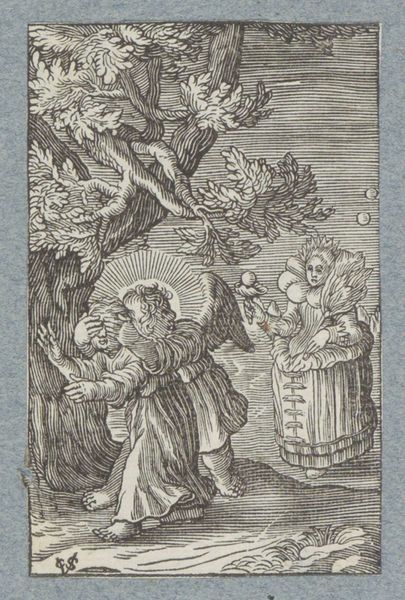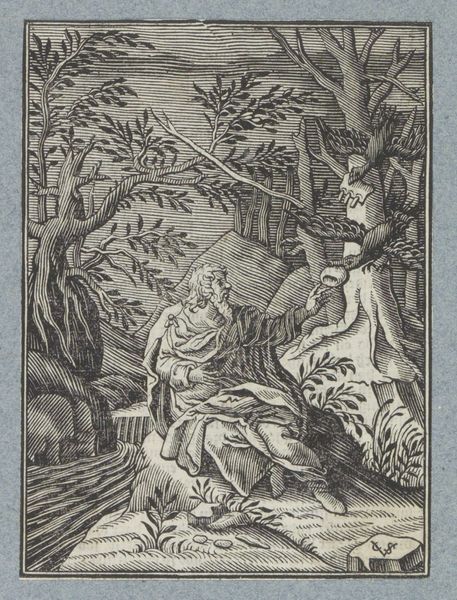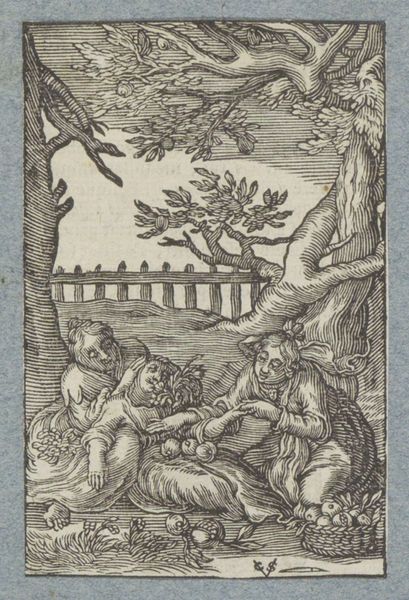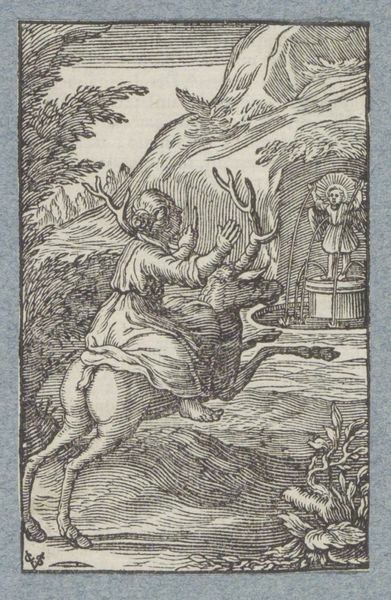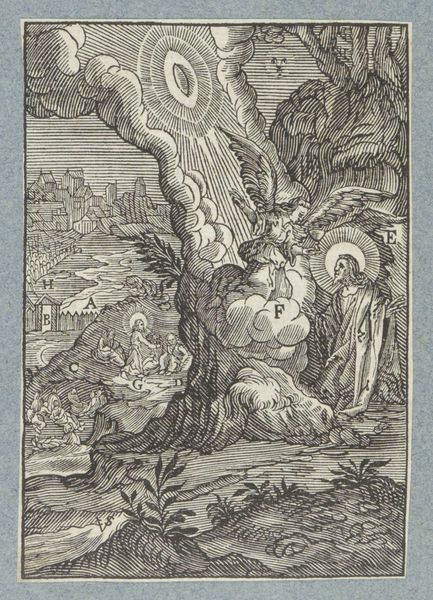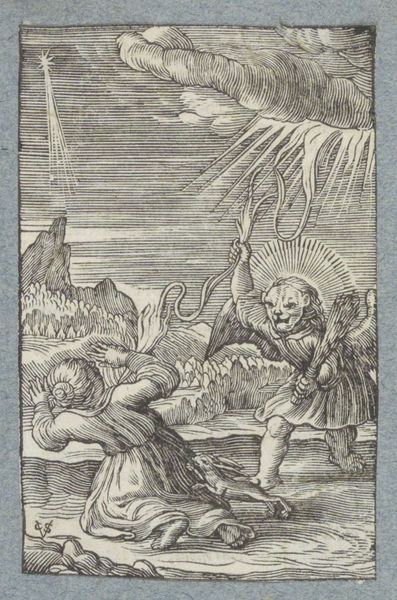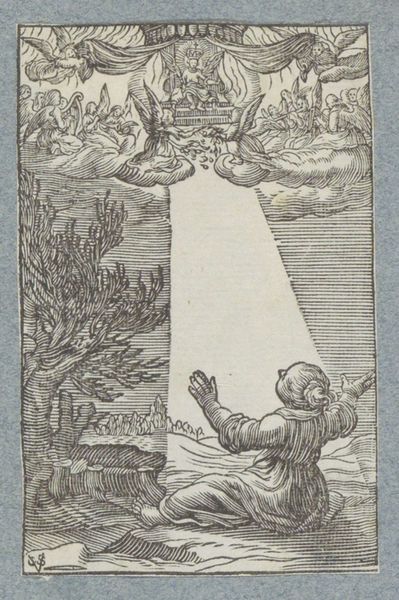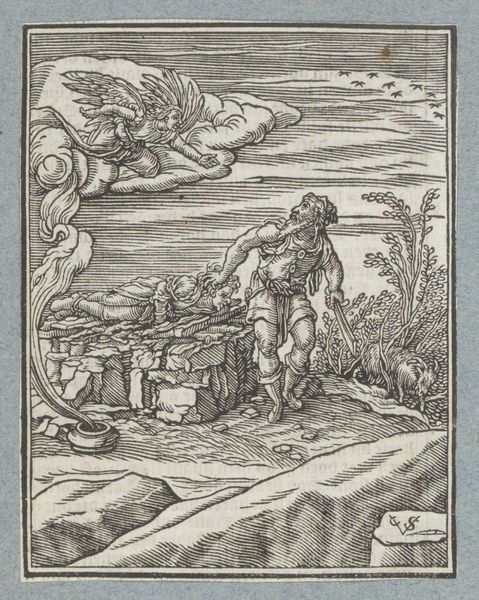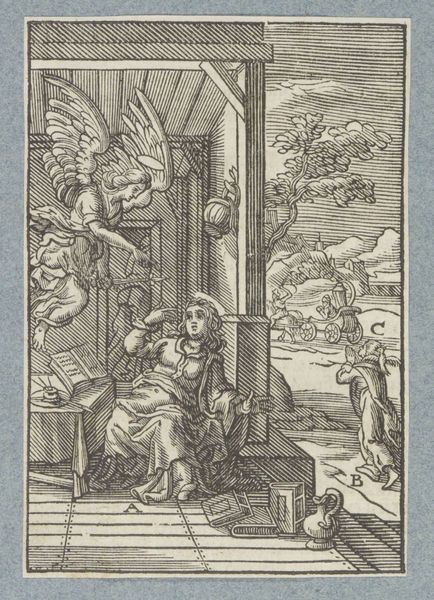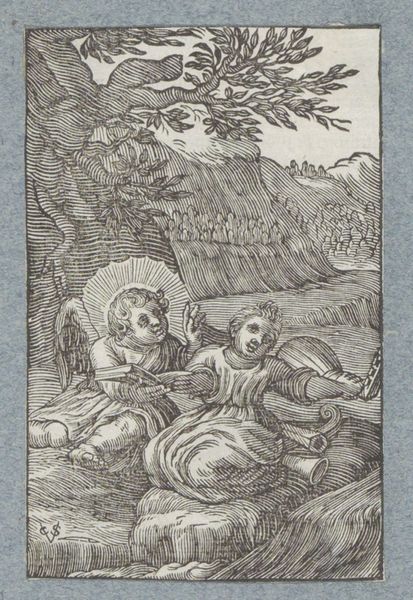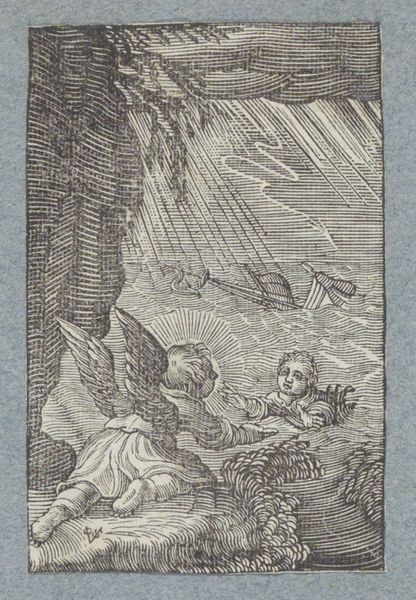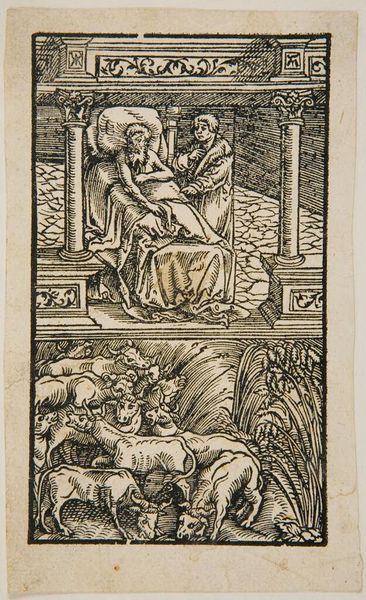
drawing, ink, engraving
#
drawing
#
narrative-art
#
baroque
#
pen sketch
#
pencil sketch
#
sketch book
#
figuration
#
personal sketchbook
#
ink
#
sketchwork
#
pen-ink sketch
#
pen work
#
sketchbook drawing
#
history-painting
#
storyboard and sketchbook work
#
sketchbook art
#
engraving
Dimensions: height 82 mm, width 54 mm
Copyright: Rijks Museum: Open Domain
Curator: This is Christoffel van Sichem II's "Engel sluipt weg van slapend kind," an engraving dating to 1628 and currently held at the Rijksmuseum. It's rendered in ink using drawing techniques. Editor: It has such a dreamlike quality! The stark contrasts created by the engraving technique give it a sort of haunting feel, wouldn't you agree? And the angel, so luminescent against that landscape. Curator: Indeed. I think understanding the cultural context of engraving is key here. Consider how printmaking made images and ideas accessible. Van Sichem’s workshop reproduced works by masters and produced their own designs, widely consumed by a growing literate public. The angel becomes a reproducible commodity. Editor: Right, the technical reproducibility… Yet, looking at it purely from a formal perspective, there’s something almost geometric about how the landscape is constructed. See the deliberate layering and hatching that defines each plane? The angel's halo feels structurally important in echoing this layering and guiding our sight. Curator: I would suggest that the image becomes more complex than that. Note how printmaking relied on workshops. While attributed to van Sichem, the image’s production relies on collaborative labor, which traditional connoisseurship obscures. We often emphasize singular artistic genius, at the expense of understanding this engraving as the output of collective skill. Editor: Certainly a key perspective! For me though, despite its clear religious subject matter, the emotional impact is really tied to how that light from the angel breaks through the heavy, earthly lines around it, emphasizing their distinct existence but making us believe that connection between angel and man is reachable through belief and faith. It is rather comforting. Curator: The social role is more pertinent, though: these readily available images reinforced the power of faith within Dutch society, an affirmation in times of turbulence. Editor: Yes, seeing this interplay of craft and material is fascinating. Curator: Precisely, and essential for comprehending the work's full significance.
Comments
No comments
Be the first to comment and join the conversation on the ultimate creative platform.
